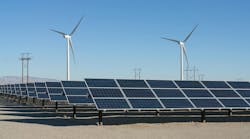One of the many holy grails of the utility industry has been the ability to fully incorporate real-time weather data and forecasts into utility operations. Sure, we already use forecasted peak temperatures to predict system peak due to summer ac loads. Some innovative utilities use dynamic thermal ratings to better utilize available transmission line capacity. System average temperatures aren’t adequate, because temperature can vary 30 degrees or more within a few miles (for example, compare San Francisco temperatures to Pleasanton’s in the East Bay during summer heat waves). But we need some "smart grid" capabilities to integrate both supply and customer side operations and squeeze the most value from modern forecasting capabilities.
For example, knowing tomorrow’s temperature would allow a really-smart thermostat to know when it makes sense to pre-chill a building/residence, thereby maintaining tolerable indoor temperature with the AC off during system peak. Of course, estimated real-time-pricing would be part of the algorithm.
And while we’re at it, we could also factor in estimated generation by distributed resources such as solar and wind. They're dependent on the weather also. Throw in some distributed storage. You’d know when to charge it and when to drain it to minimize cost and/or maximize efficiency.
No wonder Schneider Electric has acquired Telvent, a top drawer data management company, which offers global precision weather forecasting. We can expect other smart grid entrants to add weather forecasting elements to their smart grid deployment offerings.
Voice your opinion!
Voice your opinion!
To join the conversation, and become an exclusive member of T&D World, create an account today!
Latest from Demand Side Management
Latest from Demand Side Management

